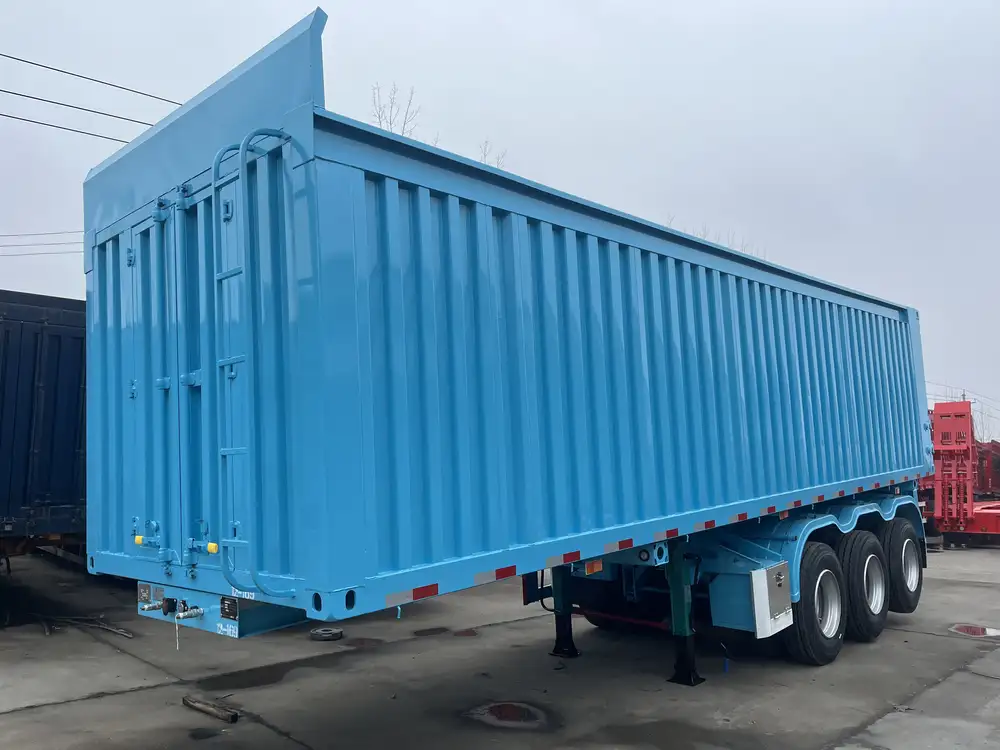Strapping a car onto a flatbed trailer can seem like a daunting task, but with the right sequence of actions, tools, and knowledge, it can be accomplished safely and efficiently. In this guide, we will delve into the specifics of how to strap a car on a flatbed trailer, ensuring the vehicle is securely fastened for safe transport.
The Importance of Properly Strapping a Vehicle
Proper strapping is essential not only for enforcing safety during transportation but also for compliance with legal regulations. An improperly secured vehicle can shift during transit, posing significant risks to other road users, and could lead to costly damages.
Key Considerations:
- Legal Regulations: Many jurisdictions have strict regulations governing the secure transport of vehicles.
- Safety: Inadequate strapping can result in accidents, risking both personnel and cargo.
- Vehicle Condition: Prevent unnecessary damage to the vehicle through careful strapping.
Essential Equipment for Strapping a Car
Before we address the techniques of strapping a car, it’s critical to gather the right tools. Here’s a checklist of necessary equipment:
| Equipment | Purpose |
|---|---|
| Ratchet Straps | To secure the vehicle tightly to the trailer |
| A Wheel Chock (optional) | Prevents the vehicle from rolling during the process |
| Tie-Down Points | Ensure the points on the trailer are suitable for strapping |
| Gloves | Protects hands while handling straps |
| Tow Strap or D-Rings | For additional securing methods |
| Measuring Tape | To assess the correct length of straps if necessary |

Steps to Strap a Car on a Flatbed Trailer
Step 1: Preparation of the Trailer and Vehicle
Inspect the Flatbed Trailer: Check for any visible damage, loose components, or missing parts. Ensure that the trailer’s tie-down points are intact.
Position the Vehicle: Drive the car onto the trailer carefully, aligning it centrally to maintain balance.
Engage the Parking Brake: Always engage the car’s parking brake to prevent any movement during strapping.
Step 2: Selecting Appropriate Tie-Down Points
- Check Manufacturer Recommendations: Different vehicles may have recommended tie-down points; consult the owner’s manual or the vehicle’s design.
- Use Designated Points on the Flatbed: These are normally located near the trailer’s edges and are engineered to withstand significant forces.

Step 3: Attaching the Ratchet Straps
Position the Straps: Loop the ratchet straps over the vehicle—preferably through the rims of the wheels or around the frame. Do not attach straps to bumpers or body panels, as they may not withstand tension and could become damaged.
Route the Strap through the Ratchet: Ensure that when the strap is looped through the ratchet, it is aligned straight without twists, maximizing securehold.
Tighten the Straps: Begin tightening the strap using the ratchet mechanism. Apply consistent tension until the car is firmly held against the trailer but avoid overtightening, which could damage sensitive components.
Step 4: Securing All Wheels
Front and Rear Wheels: Ideally, you should secure both the front and rear wheels of the vehicle. For maximum stability, it is recommended to have one strap over each axle, utilizing a cross pattern when applicable.
Using Wheel Chocks: Placing wheel chocks on the tires can prevent rolling, providing an added layer of safety.
Step 5: Final Inspection
Visual Check: Once all straps are in place, do a comprehensive visual inspection. Check if the tension is consistent throughout all straps and ensure none are tangled.
Test for Stability: Gently push the vehicle to check for any movement. If the vehicle moves, the straps need to be re-evaluated and retightened.
Secure Loose Straps: Use strap keepers or wrap the excess strap around the ratchet or D-ring for a neat finish and to prevent flapping during transport.

Guidelines for Different Vehicle Types
Sedans: Typically easier to secure due to lower weight. Ensure the ratchet is secured through the wheel frame.
Trucks & SUVs: These larger vehicles might require additional reinforcement—consider utilizing multiple straps for additional security.
Classic Cars: These should be handled with extreme care to avoid potential cosmetic damage. Using softer straps may be advisable.
Avoiding Common Mistakes
As crucial as it is to know how to strap a car properly, it’s equally essential to be aware of what not to do:
| Mistake | Consequence |
|---|---|
| Using damaged straps | Increased risk of failure during transport |
| Strapping to vehicle body parts | Risk of damage to paint, plastics, or structure |
| Not checking tension after loading | Potential for shifting during transport |
Legal and Safety Regulations
Transport Regulations: Familiarize yourself with the U.S. Department of Transportation (DOT) regulations and any local laws regarding vehicle transport.
Inspection Requirements: Certain states may require a pre-transport vehicle inspection for liability purposes.

Tips for Enhanced Safety During Transport
Drive within Legal Speed Limits: This reduces the risk of swaying and ensures full control over the trailer.
Regular Stops: Make stops every few hours to check the status of the straps, ensuring they haven’t loosened during travel.
Utilizing Flagging: If transporting a wider vehicle, utilize flags or markers to indicate width liability.
Conclusion
Strapping a car securely on a flatbed trailer is an essential skill for manufacturers, transporters, or anyone involved in moving vehicles. It involves understanding the various components at play, from selecting the right tools to adhering to regulatory standards. Emphasizing careful preparation, proper techniques, and awareness of industry regulations will go a long way in ensuring safe transport. By following this comprehensive guide, we increase the chances of successful vehicle transport while minimizing risks and enhancing safety for everyone on the road.



